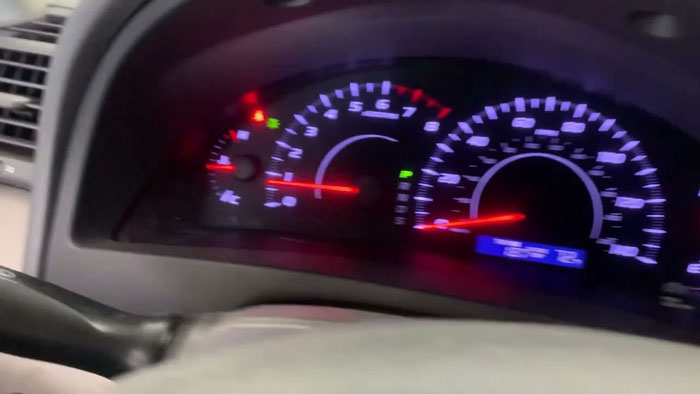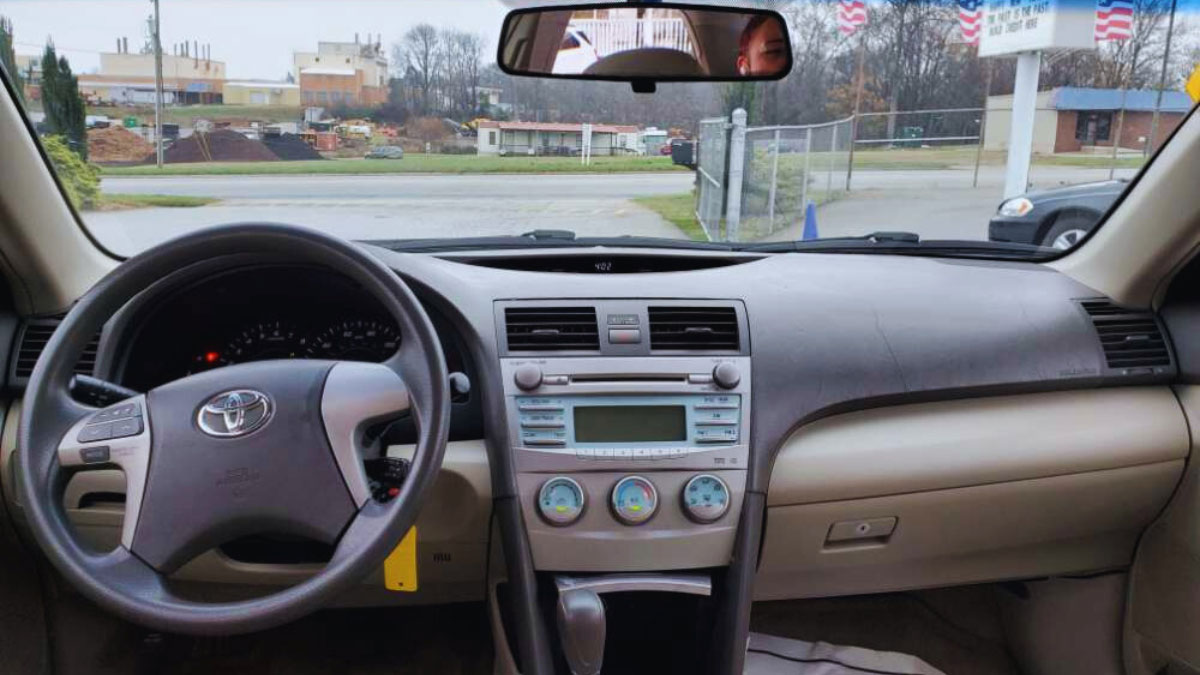Being a proud owner of a 2007 Toyota Camry comes with the responsibility of ensuring its Tire Pressure Monitoring System (TPMS) is always functioning optimally. In this guide, I’ll walk you through the simple steps to reset the TPMS in your Camry, keeping you safe on the road and extending the life of your tires.
Resetting the TPMS in your 2007 Toyota Camry is a straightforward process that can be done in just a few minutes, saving you time and potential headaches down the road. By following the correct procedure, you’ll be able to reset the TPMS system and drive with confidence, knowing your tire pressures are at the recommended levels.
Whether you’re a seasoned Camry owner or new to the world of TPMS resets, this article will equip you with the knowledge and skills needed to perform this essential maintenance task on your 2007 Toyota Camry effortlessly.
Understanding TPMS and Its Importance
What Is TPMS?
TPMS stands for Tire Pressure Monitoring System. It is a technology designed to monitor the air pressure inside the tires of a vehicle. The system alerts drivers if the tire pressure is significantly below the recommended level.
Why TPMS Is Crucial for Your Vehicle’s Safety
TPMS is crucial for your vehicle’s safety because proper tire pressure is essential for optimal performance. Driving with underinflated or overinflated tires can lead to reduced traction, increased stopping distance, and a higher risk of tire blowouts. By ensuring that your TPMS is functioning correctly, you can maintain proper tire pressure, improve fuel efficiency, and enhance overall safety on the road.
When to Reset TPMS in Your 2007 Toyota Camry

Resetting the Tire Pressure Monitoring System (TPMS) in your 2007 Toyota Camry is essential to maintaining optimal safety and tire performance. Here are common triggers that indicate it’s time to reset the TPMS:
- Tire Rotation: After rotating the tires on your 2007 Toyota Camry, the TPMS may need to be reset to ensure it accurately monitors each tire’s pressure.
- Tire Replacement: Installing new tires requires a TPMS reset to recalibrate the system for the new tire pressure levels.
- Low Tire Pressure Alert: When the TPMS alerts you to low tire pressure, it’s crucial to reset the system after inflating the tires to the correct pressure.
By resetting the TPMS in your 2007 Toyota Camry in these situations, you can maintain safe driving conditions and prolong the lifespan of your tires.
Step-by-Step Guide: Resetting Your Tire Pressure Light
Tools and Precautions Before Starting
Before resetting the Tire Pressure Monitoring System (TPMS) light in your 2007 Toyota Camry, you’ll need to gather a few essential tools:
- Properly inflated spare tire
- Tire pressure gauge
- Ignition key
Ensure your vehicle is parked in a safe and level area before beginning the reset process. It’s crucial to follow the manufacturer’s guidelines and recommendations while performing the TPMS reset to avoid any damage to your vehicle’s system.
Detailed Resetting Procedure
To reset the TPMS light in your 2007 Toyota Camry, follow these steps:
- Start by turning the ignition key to the “ACC” position without starting the engine.
- Locate the Tire Pressure Reset button beneath the steering wheel, near the driver’s side door.
- Press and hold the Reset button until the TPMS light blinks three times.
- Release the Reset button. After a few moments, the TPMS light should turn off, indicating a successful reset.
- Turn off the ignition key and start the engine to ensure the light remains off.
By following these simple steps, you can reset the Tire Pressure Light in your 2007 Toyota Camry efficiently and ensure proper tire pressure monitoring for safe and smooth driving experience.
Decoding TPMS Warning Light Signals
When the Tire Pressure Monitoring System (TPMS) light in my 2007 Toyota Camry remains solid, it typically indicates a tire with low pressure. Checking the tire pressure using a reliable gauge and inflating the underinflated tire to the recommended level can resolve this issue efficiently.
In my experience, when the TPMS light in the 2007 Toyota Camry flashes, it signifies a malfunction in the system itself. Immediate inspection by a qualified technician is crucial to diagnose and address the problem accurately, ensuring the TPMS functions properly for optimal safety on the road.
Tips for Maintaining Your TPMS
To ensure the efficiency and accuracy of your TPMS, follow these essential tips:
Regular Maintenance Tips
- Check Tire Pressure: Regularly monitor your tire pressure, ideally once a month, to ensure they are inflated to the manufacturer’s recommended levels. Proper tire pressure not only enhances fuel efficiency but also helps in accurate TPMS readings.
- Inspect Sensors: Periodically inspect the TPMS sensors for any damage or corrosion. Clean them if necessary to maintain optimal performance.
- Battery Replacement: TPMS sensors have batteries that last around 5-7 years. Replace these batteries when needed to prevent sensor failure.
- Valve Stem Maintenance: Ensure the valve stems are properly sealed and not damaged to prevent air leaks, which can lead to incorrect TPMS readings.
- Tire Rotation: After rotating your tires, ensure that the TPMS is recalibrated or reset to update the system with the new tire positions.
- Addressing Alerts Promptly: If the TPMS alert light illuminates, it’s crucial to check the tire pressure immediately and address any issues promptly to prevent damage to the tires and ensure safe driving conditions.
- Professional Inspection: If you encounter persistent TPMS warning lights or suspect sensor malfunctions, seek professional help to diagnose and resolve the problem accurately. Ignoring TPMS issues can compromise your safety on the road.
By adhering to these maintenance tips and addressing common TPMS issues promptly, you can extend the lifespan of your tires, improve fuel efficiency, and enhance overall safety while driving your 2007 Toyota Camry.
Conclusion
Maintaining the TPMS in your 2007 Toyota Camry is crucial for safety and tire longevity. Resetting the TPMS after tire changes or alerts ensures accurate monitoring for safe driving. Understanding TPMS warning signals is vital; solid lights indicate low pressure, while flashing lights signal system issues needing immediate attention. Follow the provided maintenance tips to extend tire life, boost fuel efficiency, and enhance safety. Regularly checking pressure, inspecting sensors, and responding promptly to alerts can prevent potential problems. Trust professional technicians for thorough inspections and repairs to keep your Toyota Camry running smoothly and safely. Remember, a well-maintained TPMS contributes to a safer and more efficient driving experience.
Frequently Asked Questions
How important is it to maintain the TPMS in a 2007 Toyota Camry?
Maintaining the TPMS in a 2007 Toyota Camry is crucial for safety and tire durability. Regular TPMS maintenance ensures accurate monitoring, safe driving conditions, extends tire lifespan, improves fuel efficiency, and enhances overall safety.
When should the TPMS be reset in a 2007 Toyota Camry?
Reset the TPMS after tire rotation, replacement, or low pressure alerts to maintain accurate monitoring. It is essential to reset the TPMS to ensure proper functioning and safety while driving.
What do TPMS warning light signals mean in a 2007 Toyota Camry?
In a 2007 Toyota Camry, a solid TPMS light indicates low tire pressure, while a flashing light signals a system malfunction. Prompt inspection by a qualified technician is necessary to address any TPMS warning light signals for safe driving.

